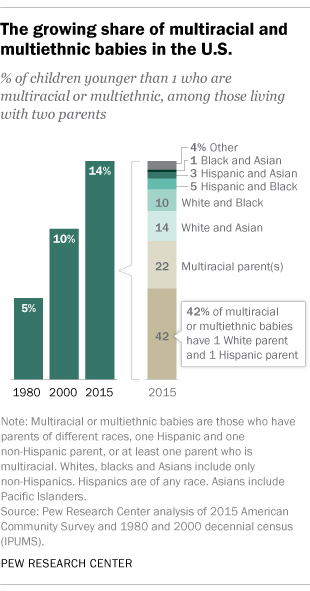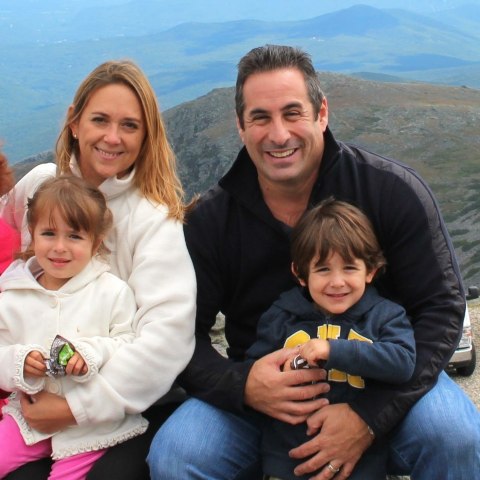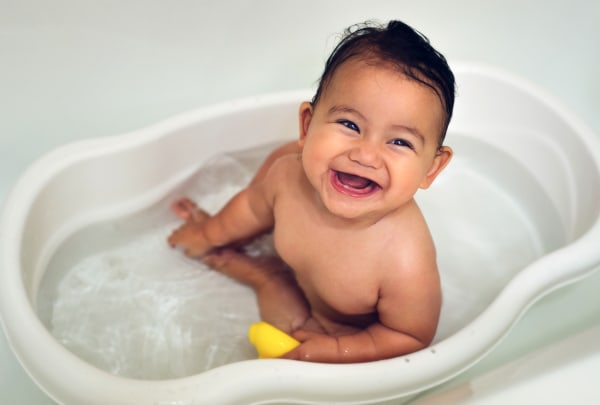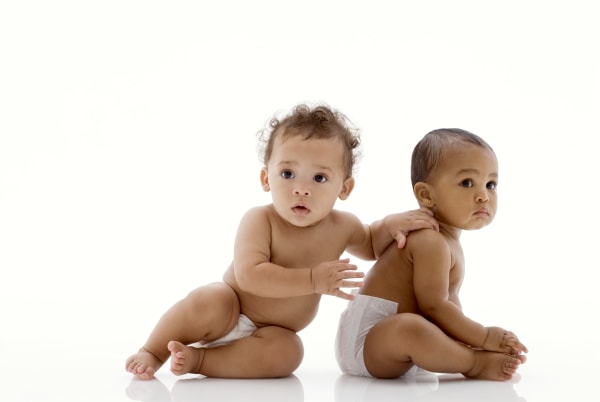By Carmen Sesin
NBC Latino, June 8, 2017 —
MIAMI — Ana Elisa Pacas’s twins have a Latina mom and a non-Latino dad. A recent report finds more and more infants are like her twins.
About one-in-seven, or 14 percent of U.S. children under the age of one in 2015 were multiracial or multiethnic, three times greater than it was in 1980, according to an analysis released by Pew Research.

In 1998, Ana Elisa Pacas left her native El Salvador to study International Business and Marketing at Loyola University in New Orleans. After graduating and working for a company in Louisiana for a few years, Hurricane Katrina ravaged the area and Pacas left for Miami, where she met her husband, who is not Hispanic.
“He was the only American in Miami I knew,” she joked, in reference to the city’s heavy Latino population.
The couple got married and Pacas gave birth to twins in 2010.

Ana Elisa Pacas with her husband and twins while on vacation in New Hampshire. (Courtesy of Ana Elisa Pacas)
Pacas was born and raised in Latin America and and her husband in the U.S., but she says their different cultural upbringing has not impacted their parenting.
“I don’t think it’s hard as long as you have the same values,” Pacas said.
The largest portion of multiethnic or multiracial babies, 42 percent, have one parent who is Hispanic and one who is non-Hispanic white, like Pacas’ children. The second largest group, at 22 percent, has at least one parent who is multiracial. And 14 percent have one parent who is non-Hispanic white and another who is Asian.

A sweet 9-month- old baby who loves her bath time. Layland Masuda / Getty Images
For Pew’s analysis of Census Bureau data, they used the term ethnicity in reference to Hispanics only, like the Census does. For instance, the term multiethnic would not apply to a child with a Middle-Eastern mother and a European father.
“If someone looked at interracial and multiethnic kids and used a broader definition of ethnicity —the shares of multiethnic kids would certainly be much higher,” according to Gretchen Livingston, a senior researcher at Pew who focuses on fertility and family demographics and authored the analysis.
The analysis only considered infants living with two parents because the Census Bureau only gathers race and ethnicity data for parents living in the same home. This was the situation for only 62 percent of infants in 2015 – another indication the real number may be higher.
The rise in multiracial or multiethnic infants coincides with the growth in marriages among couples of different races or ethnicities. It was only 50 years ago that the U.S. legalized interracial marriage with the landmark Supreme Court case of Loving v. Virginia.
“Five percent of infants in 1980 were born to parents of two different races or ethnicities. So just to put that in perspective, in that same year, about 7 percent of newlyweds were couples of different races or ethnicities,” Livingston told NBC Latino. Contrast that with their recent report that in 2015, one-in-six newlyweds had a spouse of a different ethnicity or race.
The analysis pointed out these trends are likely occurring because of the growing racial and ethnic diversity in the U.S.

Two baby boys (6-11 months). Nancy Brown / Getty Images
The majority of the general public does not take issue with this trend. Sixty-five percent of people surveyed in a 2015 Pew Research Center survey said this trend didn’t make much of a difference. Twenty percent said more children with mixed race parents is good for society and 11 percent thought it was bad.
The amount of multiracial and multiethnic infants varies in each state with the majority found in Hawaii, at 44 percent. Oklahoma and Alaska also have high shares at 28 percent each. Some of the states that have the fewest multiethnic and multiracial infants include Vermont at 4 percent as well as North Dakota, Maine, Mississippi, and West Virginia with 6 percent each.
For Pacas, raising multiethnic children in the U.S. has not been an issue. Her husband speaks some Spanish and the family travels to El Salvador once a year to visit her relatives. “In terms of culture and tradition it hasn’t been hard because we have the same ideas of how we want the kids to grow up,” Pacas said.











